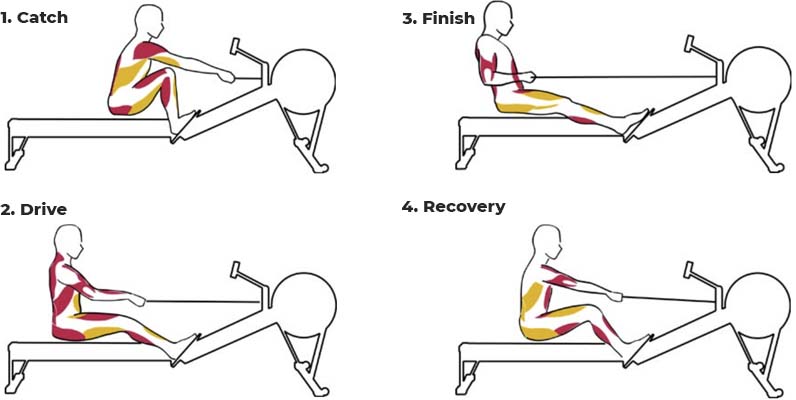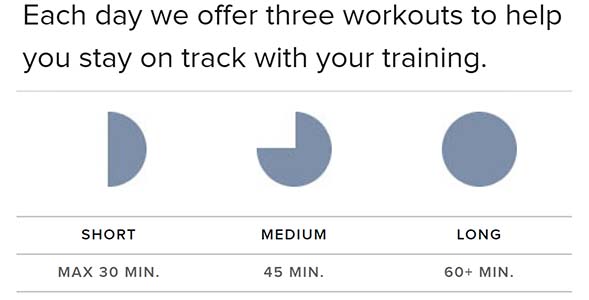I bought a rower at the beginning of the year as a substitute for my running sessions when it was too snowy out. Now I use it every week. I love it. And I wonder if everyone should be rowing. How do I use it? What’s so great about rowing? And how has it reduced my risk for injury? Well, let’s get into it!
Rower Flexibility
I got my rower in the middle of winter after I realized running outside was becoming too icy and dangerous. At the time, I didn’t have an aerobic or running plan in place. I was mostly doing Zone 2 runs. So, when I got the rower, I decided to start with Concept 2’s workout of the day, around 5 days a week. They put up a new workout on their website each day and it’s free. It details how to program the machine for each workout, and it was a wonderful way to get started. I did intervals, pyramids, easy sessions, and everything in between. It was great. I learned how to use the machine while getting fit.
Once the weather improved, I got back to running and started following my VDOT running program. But I kept rowing. One thing that surprised me is how flexible the rower is. It can be used on leg or back days for developing strength and power. Just like sets of deadlifts, the rower can be used for 3 sets of 10 maximal pulls that engage the posterior chain. Or it can be used for HIIT and Zone 5 work. Just like running 100m sprints with 20 seconds of rest, I could row hard for 100m with 20 seconds of rest. Or it can be used for Zone 2 work. This is what I use it for right now. Each Monday and Friday I do a 20+ minute easy row where my heart rate sits below 140bpm. Let me tell you why I’ve settled on this.
Low-Impact Cross-Training
Unlike walking where your weight transitions slowly from one foot to the other, running is like hopping from one foot to the next. All your weight is absorbed on one leg abruptly. It’s a high impact. Run for 45 minutes and you’re doing this hop on each leg thousands of times. And this makes running a more dangerous activity than low-impact activities like walking, cycling, and swimming. Being a runner, I wanted a way to reduce injury risk. This is where the rower came in.
A study from the University of Memphis states that “replacing some runs with nonimpact or low-impact cross-training when increasing training intensity and volume may be useful in reducing injury risks.” My rower is low-impact. Instead of running 7 days a week which led to my injuries last year, I decided to substitute two of the easy days for rowing. So far this year, I’m injury free. And if you’re not a runner, cross-training for the general population is beneficial for overall fitness too. [1,2]
Total Body Workout
Another reason I settled on a rower was its total body focus. Running and cycling are lower body focused. Rowing on the other hand is about 60% lower body and 40% upper body. Depending on where you are in the row, you get engagement of the quads, glutes, calves, core, back, and biceps. Not often have I worked all those muscles aerobically. Now I can.[3,4]

And it can help with low back pain and posture. Most of our daily lives are spent hunched over keyboards, phones, and laptops. This tightens our chest and weakens our back. A rower provides an opportunity to fix both issues by focusing on a movement that stretches the chest and strengthens the back. Commonly neglected muscles are now the focus. This isn’t something I would’ve got biking.
Cheapish, Durable, Compact
And lastly, I just want to mention a few miscellaneous items. I got my Concept 2 rower, which is normally over $900, off Facebook marketplace for $700. It was used once. Even if I bought it new, it’s much cheaper than a $3,500 treadmill or $2,000 bike. The Concept 2 rowers are known to last over 10 years and don’t require electricity or maintenance. They’re durable, cheap, and don’t take up much space. As you can tell, I’ve fallen in love with my Concept 2.
Final Thoughts
Whether a rower fits into your life and exercise goals is up to you to decide. But I’ve found it useful for a variety of situations like Zone 2, Zone 5, strength, and power training. It’s also my aerobic cross-training. It’s a full body workout that helps correct my desk job posture and reduce my risk of injury. Plus, it’s cheap, durable, and compact. I may be biased but it is my latest habit for health excellence.

Hi, I’m Brandon Zerbe
Welcome to myHealthSciences! Every week I share habits for health excellence. I do this by covering topics like Fitness, Nutrition, Sleep, Cognition, Finance and Minimalism. You can learn more about me here.
Sources:
- [1] The Impact of Different Cross-Training Modalities on Performance and Injury-Related Variables in High School Cross Country Runners
- [2] Effects of Cross-Training. Transfer of Training Effects on VO2Max Between Cycling, Running and Swimming
- [3] Beth Lewis: The Art of Stability
- [4] Rowing and Your Muscles

